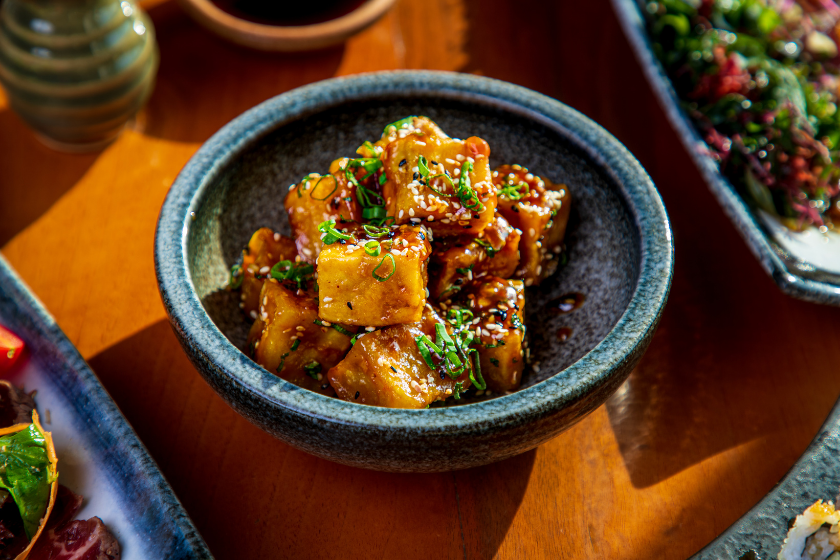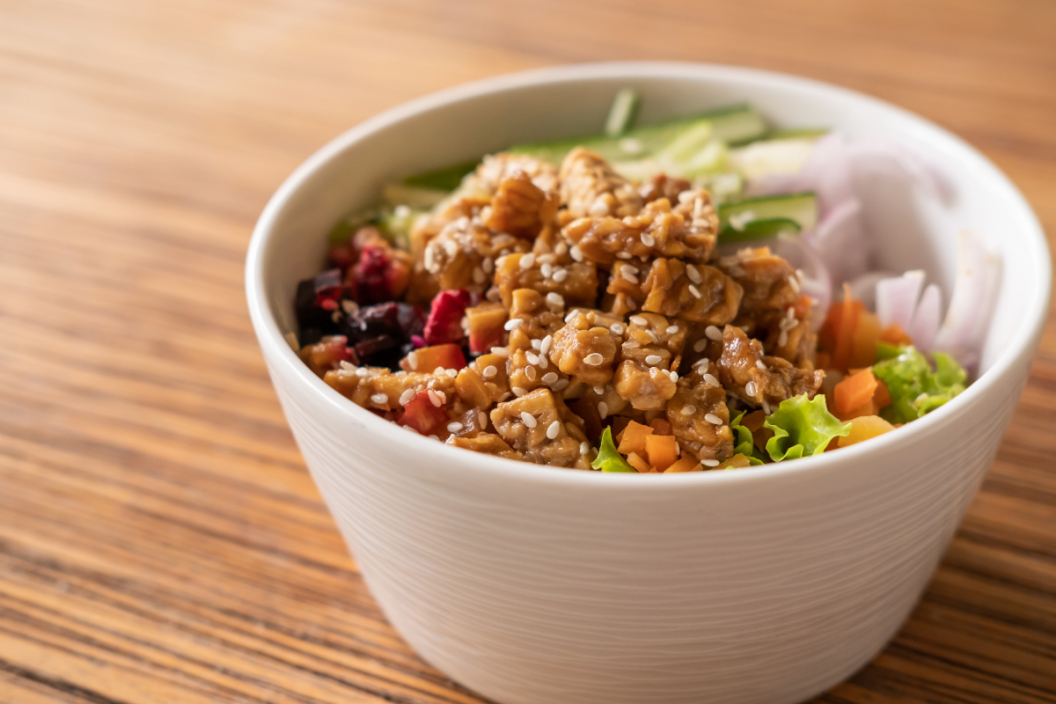When starting a vegan diet or simply deciding to add more plant-based protein foods into your weekly meals, you will undoubtedly come across tempeh and tofu. And since they're both soy products, you might wonder what's the difference between the two and how to prepare them. Here's what you need to know about tempeh vs. tofu.
Videos by Wide Open Country
Tempeh

Originating in Indonesia, tempeh is made from fermented soybeans that are pressed into a compact cake. The fermentation process helps break down the phytic acid in soybeans, making the starches in tempeh easier to digest and absorb.
Tempeh is extremely nutrient-rich and high in protein, making it one of the best vegan and vegetarian protein sources. It also contains high levels of iron, calcium, B vitamins, magnesium, manganese, and phosphorus.
It has a firm, but dry and chewy texture with a mild taste, making it perfect for any type of preparation and processing. From sauteeing and frying to baking and steaming, it performs well under any type of heat. Because of its mild and actually pretty bland flavor, it easily absorbs sauces, marinades, and broths, making it an incredibly versatile cooking ingredient.
Tempeh is also known for a variety of health benefits. Since it's made by a fermentation process, tempeh is a probiotic, helping replenish your microbiome with beneficial bacteria. It also contains fiber, making it a prebiotic, feeding the healthy bacteria in your gut and increasing the formation of short-chain fatty acids in the colon.
In addition to that, tempeh's high protein content promotes muscle growth, helps increase your metabolism, and makes your body more efficient at burning fat. Since it's derived from soybeans, it's also rich in isoflavones. These powerful compounds lower cholesterol and triglyceride levels protecting against heart disease while at the same time fighting free radicals and protecting against oxidative stress and cellular damage.
Cooking With Tempeh
Tempeh is usually described as having a mildly savory taste with an earthy and nutty flavor that's similar to mushrooms. Some of the most popular ways to make tempeh include:
- Adding it to stir-fries
- Grating and adding to meatless chili
- Baking and adding to salads or vegetable bowls
- Thinly slicing and pan-frying to crisp it up and adding it on top of any meal for extra crunch
Tofu

Another popular meat alternative, tofu originated in China, and it's made of condensed soy milk that's pressed into solid white blocks through a process very similar to cheese making. Tofu is able to retain a solid shape due to a mineral-rich coagulant called nigari, which is left over after salt is extracted from seawater.
Tofu has a high protein content and contains all essential amino acids, making it the perfect meat substitute and protein source for anyone looking to add more plants to their diets without sacrificing their protein intake.
It's also rich in calcium, manganese, copper, selenium, and vitamin A, making it a real powerhouse of nutrients. It boasts a myriad of health benefits, from antioxidant-rich isoflavones which help fight free radicals and lower inflammation to potentially reducing the risk of type 2 diabetes and even protecting against cancer.
Cooking With Tofu
Similar to tempeh, tofu has a really mild taste, making it a perfect base ingredient that can easily obtain the flavor of anything you add to it. The most popular ways to prepare and cook tofu include:
- Baking it in the oven until crispy
- Adding to stir-fries with other veggies, beans, and legumes
- Crumbling it into faux egg scrambles
- Pan-frying it and adding it on top of salads, vegetable bowls, or even soups
- Adding to smoothies for extra protein and creaminess
- Marinating and coating with sesame seeds or flax seeds before pan-frying for additional flavor
Silken Tofu
When buying tofu in your grocery store, you might notice something called silken tofu. That's Japanese-style tofu with a softer consistency, which can crumble easily so it's recommended not to press it. Due to its soft texture, it's usually used to make dressings, sauces, and even desserts, serving as a stand-in for everything from soy milk to cream.
Tempeh vs. Tofu
When it comes to comparing the two, both of these soy products are low-calorie, low-carb, gluten-free, high in protein, nutrient-dense, and bring on a variety of health benefits. They are also both very versatile and can be used in almost any meatless dish. You can find them in most grocery stores and plenty of brands now offer pre-marinated or even smoked versions of tempeh and tofu with additional flavors even before you've prepared them to your liking.
That being said, tempeh does contain more protein and fiber than tofu, but it's also higher in calories and fat. Still, they're both still pretty low in calories so you can use them interchangeably. They can both be eaten raw as well as cooked in any way you want, making them one of the easiest sources of protein you can eat.
Soybeans have established a sort of a bad rap due to the fact that most soy crops in the US are GMO as well as because of their estrogen-like compounds, phytoestrogens. But, recent studies have shown how soy has either a beneficial or neutral effect on various health conditions and that it can safely be consumed several times a week, as it's likely to provide a plethora of health benefits.




